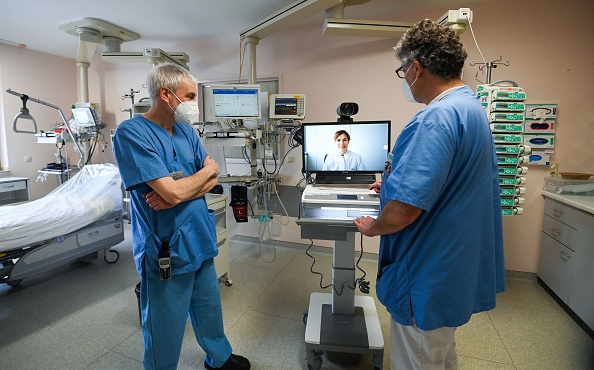Health care improvements that were made during the COVID-19 pandemic and can be sustained and expanded going forward include collaboration to improve health equity, greater use of telehealth and an emphasis on mental and behavioral health care, America’s Health Insurance Plans CEO Matt Eyles told the AHIP National Health Policy Conference.
“This is a seminal moment for racial and social justice and greater diversity, equity and inclusion,” Eyles said.
The pandemic also led to more adoption of value-based care, creating stability and continuity for hospitals and providers in a time of crisis, and showed the importance of strengthening the existing health care and coverage system, including the Affordable Care Act, Eyles said.
“Value-based providers were more resilient and better able to deliver care to the communities they serve despite the COVID-driven swings in utilization and sites of care,” he said.
Chris Jennings, president of Jennings Policy Strategies, said elements of the Biden administration’s $1.9 trillion COVID-19 relief bill will go toward strengthening the health care system, including more substantial investments in the ACA through tax credits and additional subsidies, incentives for states to expand their Medicaid programs, COBRA subsidies, and investments in mental health and home and community based services.
But the No. 1 lesson from the pandemic is that traditionally vulnerable populations were disproportionately harmed, Jennings said. The health care sector has known about disparities in the system for years, and stakeholders have a responsibility to work to resolve them, he said.
“The lack of our infrastructure, the lack of our integration between public health and health care, the lack of our commitment to addressing disparity issues has been exposed to the rest of the public in ways that I think might drive a greater political openness to the type of reforms that are necessary to address these challenges,” Jennings said.
President Bill Clinton in 2000 pledged to end health care disparities by 2020, but reforms were not made. “Words are great but actions are essential now, and we can’t have another 10, 20 years go by and not see significant improvements in addressing these issues,” Jennings said.
It is important to work with health care policymakers at the state and federal levels and with communities to integrate health and health care as well as address social determinants of health that contribute to disparities, Jennings said.
Eyles said the pandemic accelerated the use of telehealth, making it “an essential part” of the health care delivery system. But telehealth’s reach extends beyond virtual visits to home monitoring tools and audio-only engagement that increase access to care.
Demand for mental health care soared during the pandemic, and health insurers made mental health care more accessible and affordable, including through the use of telehealth and new apps, Eyles said.
Jennings agreed that sustainable changes will include greater and more efficient use of telehealth, value purchasing and the recognition of the need to address mental health in a more holistic way. Other concerns include the vulnerability of institutionalized patients and demand for alternative sites of care, and Jennings added it would be more difficult to address all of these issues without the Affordable Care Act.
Eyles said the pandemic showcased the agility of the private sector to quickly respond and innovate in a crisis, and Humana CEO Bruce Broussard noted that innovation is driven by competition.
“This competition really motivates firms to continue to innovate around whether it’s price, affordability, access points, clinical models,” Broussard said.
Competition, with appropriate regulation, creates great opportunity, he said.
____________________________________
Ellen Beck is a staff writer and editor who specializes in health care and wellness. She has been a journalist for more than 30 years for print, wire service and online publications, and in radio news.
Sign up for AHIP Solutions SmartBrief for more health care policy and insurance news, research and commentary. And for more health care content delivered straight to your inbox, check out all of SmartBrief’s health care newsletters, covering health IT, news for insurers, news for health care providers and more.
